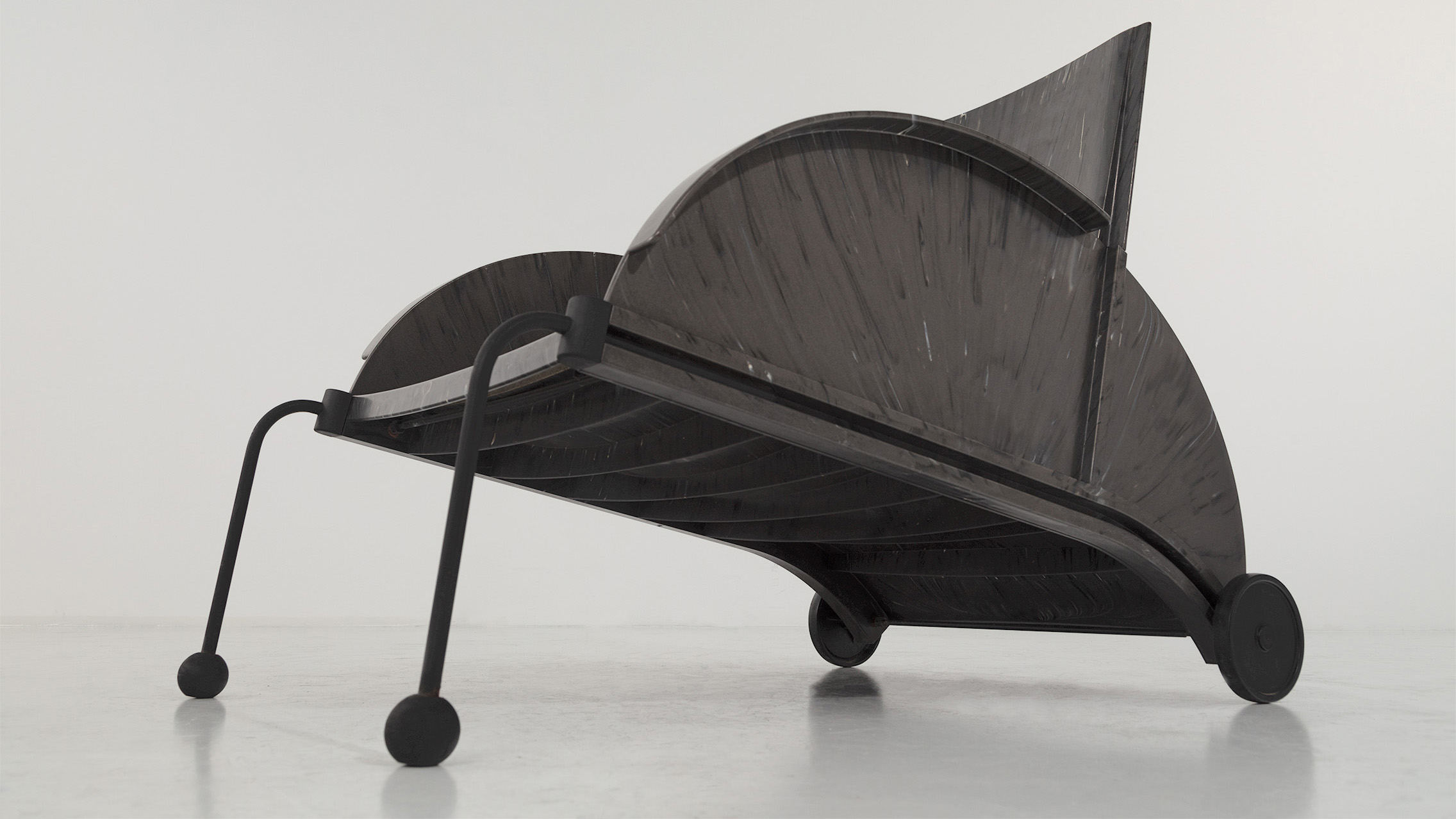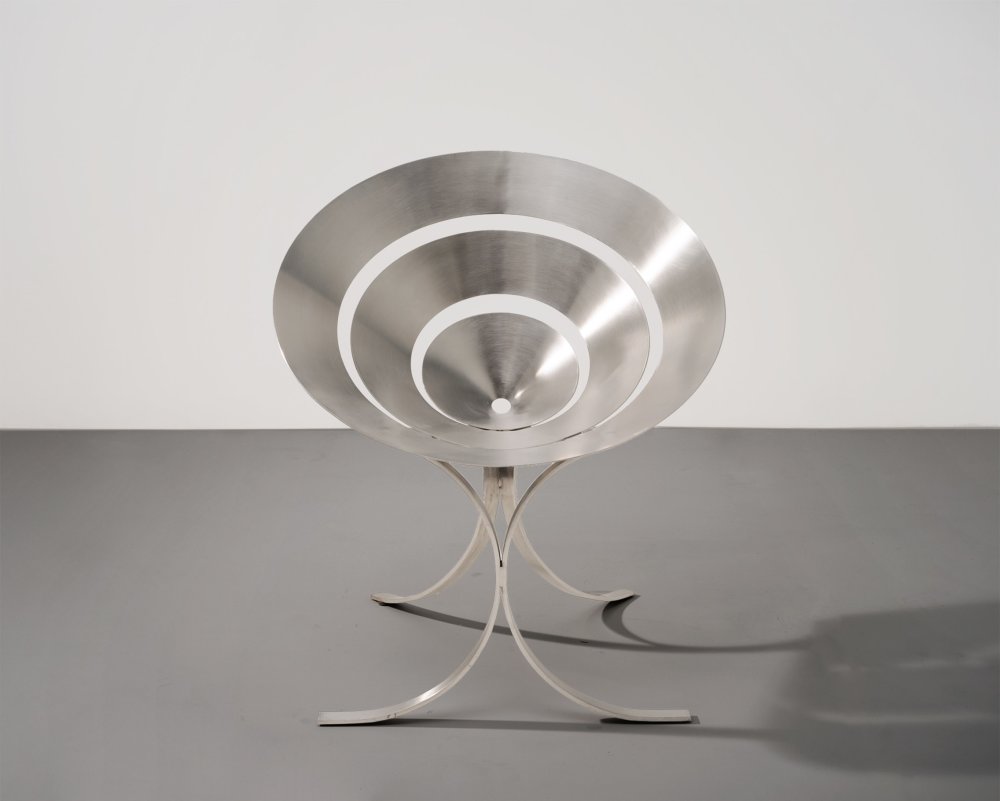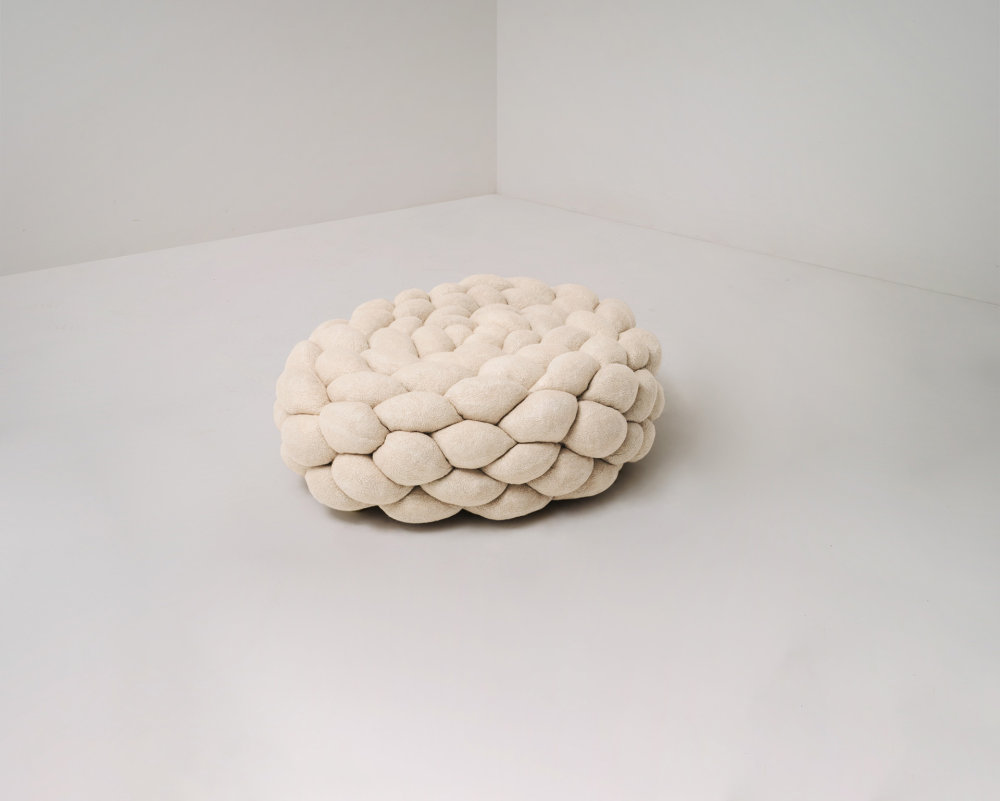The 1970s saw the second wave of modernism. Designers were heavily influenced by the politics, art movements, technological innovations, and significant events of the decade; such as the 1973 oil crisis, postmodernism, the radical design movement, disco culture, and the Space Age. As production of designer-to-consumer goods slowed, determined and courageous designers in the 70s experimented with couture design. The persistent demand for luxury furniture allowed designers to create a new narrative and sophisticated furnishings in small editions for chic interiors.
Stylistically, the decade was characterized by exaggerations and extremes, super minimalism on the one hand, and playfulness, kitsch, and historical eclecticism on the other; bright bold colors, but also neutrals; rattan and bamboo alongside Plexiglas and stainless steel. A love of synthetic materials—Lucite, vinyl, polyurethane, synthetic textiles, plastic, faux fur—coexisted with an appreciation for the gleaming surfaces of polished chromes, smoked glass, and shiny marbles. Yet the rough surfaces of Brutalism, a design style at its height in the 70s, were also favored. Homes of the decade were relaxed and glamourous, furnished with low chunky sculptural pieces. Furnishings had a central role in transforming spaces of the decade with their distinctive looks, extraordinary shapes, large size, and radical forms.
The Women’s liberation movement of the 70s brought an entire generation of women to create a strong mark on the design industry with work that engaged directly with issues and technological advances of the period. Key design events of the period demonstrate that women were relegated to a secondary role within the design world. In a landmark 1972 exhibition at MoMA that celebrated the development of Italy as the mecca of modern design, Italy: The New Domestic Landscape, curated by architect Emilio Ambasz, only one female designer, Gae Aulenti, was included. The various radical design collectives formed in Italy during the decade—Archizoom, Superstudio, UFO, Gruppo Strum, Group 9999—had no founding female members. Despite being remembered as the decade of Wonder Woman, a television series that ran from 1975 to 1979 and empowered a generation of women, in the world of design and architecture women remained in the shadows. Among the successful voices were Cini Boeri; Gabriella Crespi; Pia Guidetti Crippa; Trix Haussmann; Louise Nevelson; Nanda Vigo; Afra Scarpa; Lella Vignelli; and Maria Pergay.
View all 1970s pieces





































